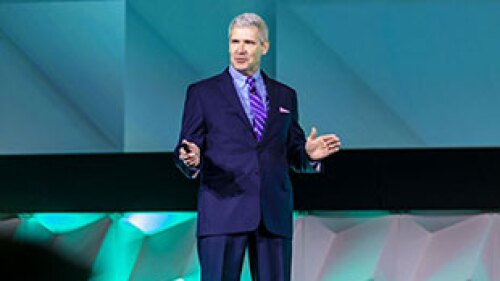In a “speed learning session” at the ULI 2011 Fall Meeting in Los Angeles, two architects and professors from the University of Illinois—Paul J. Armstrong and Paul Hardin Kapp—reported notable successes and challenges in the growing trend of “postindustrial redevelopment”—coordinated redevelopment of urban areas offering underutilized industrial and residential land. While the challenges are significant, the session demonstrated that innovative new approaches are achieving important successes in sustainable development.
Kapp, a professor specializing in historic preservation, noted that the decline of manufacturing before the 2008 recession already presented opportunities for redevelopment in many cities, and the 2008 recession accelerated the trend, lending urgency to the need for job-creating economic development in these areas. Kapp described the concept of an “urban metabolism” as discussed by Richard Florida and others, which suggests strategies for creating urban development synergies.
A number of nongovernment organizations and developers are active in this area, Kapp reported, including the Remaking Cities Institute at Carnegie Mellon University in Pittsburgh. Many of these cities do have remarkable amenities that could support a sustainable quality of life, he said. They often are walkable; have good transit systems; are affordable; offer rich heritage; have a good base of universities, hospitals, and other institutions; have cultural amenities; and—perhaps often overlooked—have ample supplies of potable water, unlike many Sunbelt cities.
The challenge, Kapp said, is to regenerate the “urban metabolism” of these regions, as regions, through revitalization, and through interim consolidation strategies. He noted there is a fierce debate about “shrinking cities” such as Detroit and New Orleans, but he argued that this is not a bad tactical tool to achieve viable revitalization within compact nodes, at least as an interim strategy.
This regeneration will require revitalizing not only underused industrial areas, but also regional transportation and communication networks, so that people can be in contact physically as well as virtually. As the work of Robert Putnam and others has shown, both are necessary. Kapp described the work of John Norquist at the Congress for the New Urbanism, in proposing new “transit corridors” that accommodate vehicles along with pedestrians, bikes, and mass transit.
Kapp then examined a series of case studies showing remarkable success. Lille, France, for example, has linked successfully with Paris and Brussels through a TGV rail service, and can now benefit from being part of a “megaregion.” U.S. cities can do the same, he said. As Lille shows, high-speed rail can help open up declining and increasingly isolated areas for new development in biomedicine, agribusiness, sustainable technology, and other light manufacturing.
In the United States, Milwaukee, Wisconsin, has seen the successful revitalization of older industrial districts, bringing in municipal services, artisans, artists, and cultural activities. The city has brought 2,000 new residences downtown since 1990, along with galleries, studios, restaurants, wholesale produce, and light manufacturing.
Minneapolis, Minnesota, also has seen a successful transformation focused upon its “Warehouse District,” a former shipping center that is now what Kapp calls the “epicenter of the arts scene,” with significant adaptive use, and has seen many more residential lofts, studios, restaurants, and historic preservation projects.
Armstrong emphasized that strong partnerships are essential, including partnerships between government and private entities. Tax increment financing is a very important tool, though it has become controversial in the current debt-cutting debate. This is unfortunate, they opined, since it is an important long-term tool to finance sustainable development.



